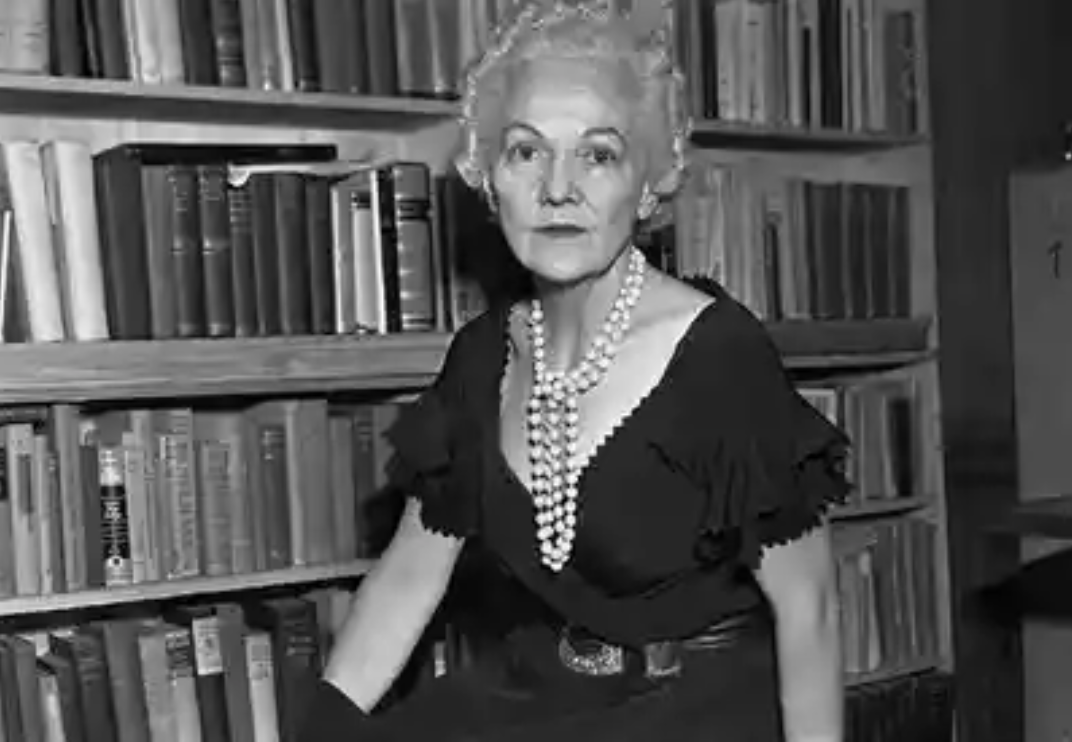
Katherine Ann Porter
*
Español
April 28, 2024
by Philip Gambone
In 1919, Katherine Anne Porter moved to Greenwich Village. Until then, the aspiring, 29-year-old writer had lived most of her life in Texas. She had published little—a few apprentice stories and some journalism—stalled by procrastination, self-doubt, and a search for material. What, she wondered, was the "proper stuff of fiction"?
"She seemed to think," writes her biographer Joan Givner, "that an exotic setting, highborn characters, and an exciting adventure were needed, and that so far her untraveled, humdrum life had yielded her no such experiences." Hence, the move to Greenwich Village, the hub of the modernist movement.
In New York, Porter met members of the Mexican artistic community, including the composer Tata Nacho and the painter Adolfo Best Maugard. Her Mexican friends told her about the exciting renaissance in art and literature taking place in Mexico. When she was offered a job with the American-backed Magazine of Mexico, which required her to visit the country in order to gather material, Porter jumped at the chance.
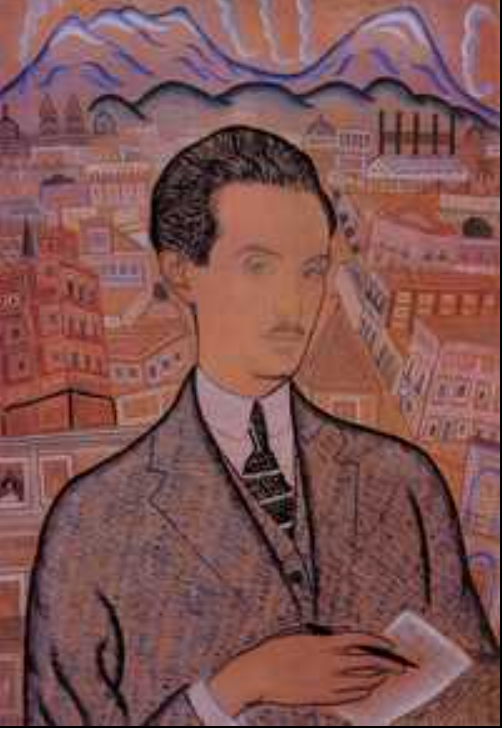
Best Maugard
*
She went to Mexico to explore and to write, but, as one of her early interviewers noted, "found herself instead in the center of the Revolution." On the way, from the window of her train, she saw the ruins of haciendas and bullet-riddled buildings pasted with slogans: MUERTE A LA TIRANÍA and PAN, TIERRA Y LIBERTAD. Undaunted, Porter embraced the "wild escapade" of her first visit outside the United States. Sympathetic to the liberal government of Álvaro Obregón, she came to admire the Mexican temperament of "aesthetic magnificences, and, above all, the passion for individual expression without hypocrisy, which is the true genius of the race."
During this first stay in Mexico, Porter taught dance at a girls' high school and took on commercial writing assignments in order to make money. All the while, she was, as Givner puts it, "methodically collecting material for her own fiction."
By 1921, anti-revolutionary factions were agitating against the more progressive elements in the country. "Uneasiness grows here daily," Porter wrote in one of her earliest reports from Mexico City. "Battles occur almost daily between Catholics and Socialists in many parts of the Republic." Her left-leaning sympathies made her vulnerable to accusations that she was a Bolshevik. She no longer felt safe. With some difficulty—Porter had no money—she got herself back to the United States with plenty of material for stories and essays.
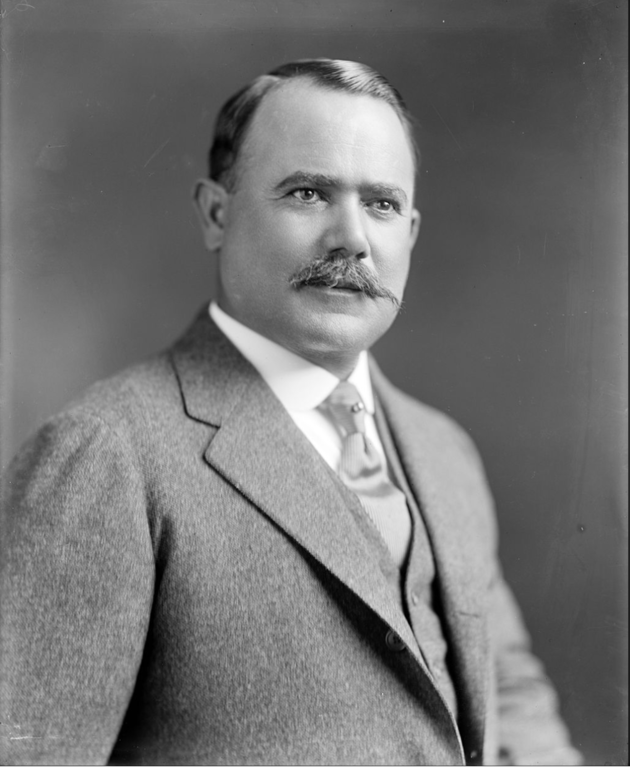
Álvaro Obregón
*
Soon, however, Porter was back in Mexico, appointed by Obregón to help organize a traveling exhibition of Mexican folk art. Her duties included enlisting U.S. galleries to host the show and writing the text for the accompanying catalogue, Outline of Mexican Popular Arts and Crafts.
For that assignment, Porter diligently did her homework. She read widely and deeply, consulting books by historians, artists, archaeologists, and educators. In her 30-page catalogue essay, she called Mexican art "an invaluable, eloquent thing." "It is filled with a rude and healthful vigor, renewing itself from its own sources. Above all, there is no self-consciousness, no sophisticated striving after simplicity. The artists are one with a people simple as nature is simple: that is to say, direct and savage, beautiful and terrible, full of harshness and love, divinely gentle, appallingly honest."
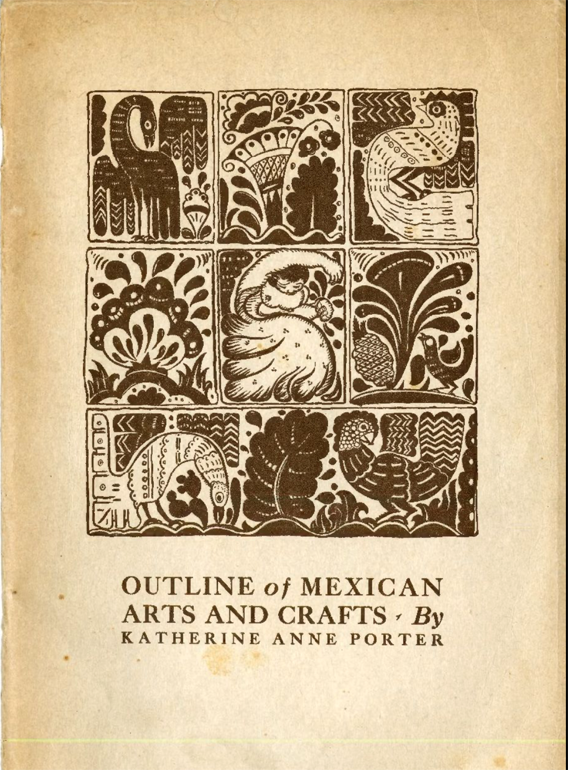
Givner says that Porter's work on the catalogue gave her "her first exposure to a coherent, consciously articulated aesthetic philosophy, and she was profoundly affected by it. Ever afterward, she incorporated her ideas on Mexican art into her own aesthetic theory, expressing frequently, in her discussions of her own work, the opinion that the artist must draw his strength from his roots and from his familiar world."
Porter went on to publish several essays about Mexico. In "Why I Write About Mexico" (1923), she penned a kind of apologia: "I write about Mexico because that is my familiar country." The essay begins with an anecdote. During the Revolution, as she was watching a street battle, a very old Indian woman stood by her side, holding Porter's sleeve. Later, when the dead were being piled up to be burned in the public square, the woman said, "It is all a great trouble now, but it is for the sake of happiness to come," and crossed herself. Porter mistook her meaning. "In heaven?" she asked. "No, on earth," the Indian corrected her. "Happiness for men, not for angels!"
Porter wrote: "She seemed to me then to have caught the whole meaning of revolution, and to have said it in a phrase. From that day I watched Mexico, and all the apparently unrelated events that grew out of that first struggle never seemed false or alien or aimless to me. A straight, undeviating purpose guided the working of the plan. And it permitted many fine things to grow out of the national soil…. It was as if an old field had been watered, and all the long-buried seeds flourished."
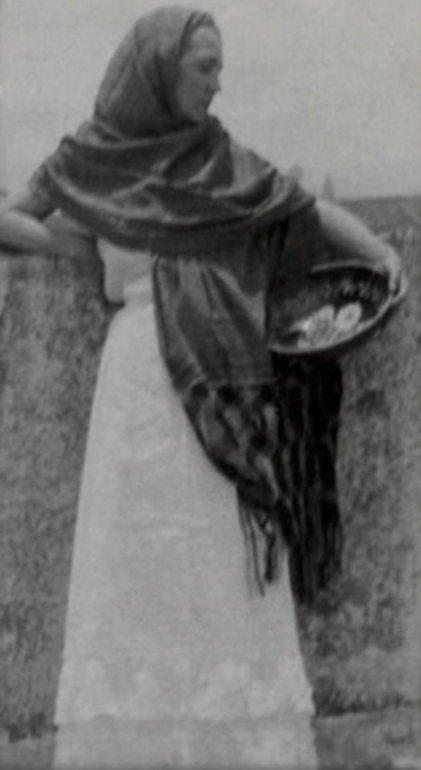
Porter in the dress of a "town Indian woman", Mexico City, 1930
*
Porter loved the "old field" that was Mexico. For her the Revolution and the art that grew out of it betokened "profound and honorable" freedoms. As her own artistry as a writer grew, Mexico became far more than a source of local color and exoticism. It was "a moving experience in my own life that is now a part of me."
In another essay, "The Fiesta of Guadalupe" (1923), Porter struggled to come to terms with "the terrible reasonless faith" of Mexican Catholicism, a faith based on "one magnificent Egoist who dreamed that his great heart could redeem from death all the other hearts of the earth destined to be born." She was not a believer, and in the "humble and beseeching hands" of the pilgrims to the shrine of the Virgin of Guadalupe she could only discern "eyes turned blinded away from the good earth … to the vast and empty sky."
But Porter never condescended to Mexican piety. Rather, as her essay concluded, she was deeply touched by the wounded hearts of the poor, which she felt beating "like a great volcano under the earth." And she fervently hoped for the time when people would "not live in a deathly dream forever."
Porter's identification with the plight of the Mexican poor is even more vehemently professed in "The Mexican Trinity" (1921), where she identified the enemies of the Revolution: capitalists, landowners, and the Church, "solidly entrenched as it is in its growing strength, and playing the intricate game of international politics with gusto and skill."
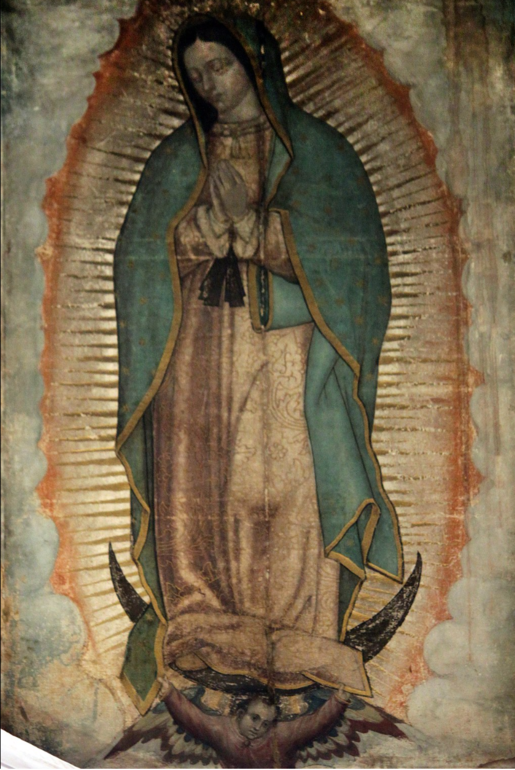
La Virgen de Guadalupe
*
The next year, she wrote another essay, "Where Presidents Have No Friends" (1922), in which she again disparaged the landowners, the oil interests, and the Church. She looked forward to "the drastic plan" of the pro-proletariat Obregón government, under which the huge haciendas would be broken up, church lands confiscated, and every foot of earth subject to government control. Amid the post-Revolution "hotbed of petty plotting," she saw a government nobly struggling to rebuild the country and forge "practicable economic and political relations with the world."
"Where Presidents Have No Friends" expresses her strongest admiration for Mexico and the path of redemption and liberty that it had taken. "They have," she concluded, "a civilized conviction that the laborer is worthy of his hire, a practical perception of the waste entailed in millions of acres of untilled lands while the working people go hungry. And with this belief goes an esthetic appreciation of the necessity of beauty in national life, the cultivation of racial forms of art, and the creation of substantial and lasting unity in national politics." Porter wrote those words a hundred years ago. They remain true to this day.
Porter was an intelligent and perceptive reader of literature, and she wrote a good many pieces of literary criticism, mostly on her contemporaries: Willa Cather ("great"); Katherine Mansfield ("the homely humility of the good craftsman"); Rilke ("an endless spinning of high, poetic, noble words"); Virginia Woolf ("a spirit at once gay and severe, exacting and generous"); E.M. Forster ("a tiger"). Among her specifically Mexican essays is a review of D. H. Lawrence's The Plumed Serpent, which she published in 1926, the year the novel came out.
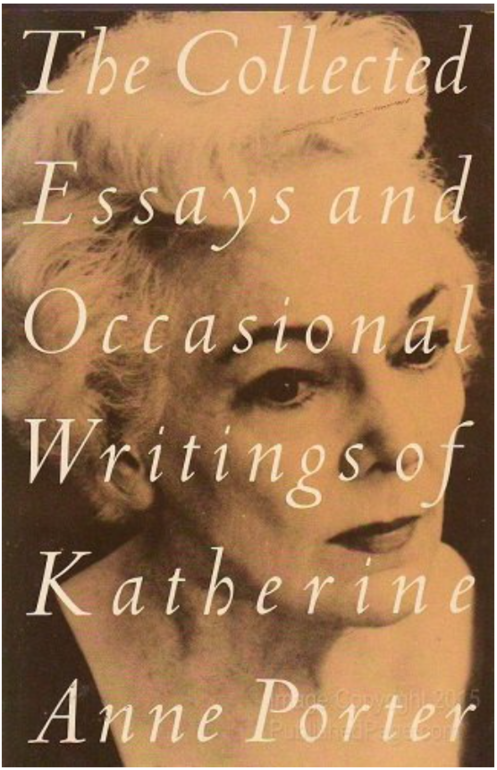
Collected Essays
*
In that essay, Porter acknowledged Lawrence's genius—"his power to create out of his own inner experience … a personal world which is also our world." She admired the way he rendered every detail of Mexico with a poet's eye. "The triumph of this book as a work of art," she wrote, "lies in this: that out of his confusions, the divisions of his mind, he has gained by sheer poetic power, to a fine order, a mystical truth above his obsessions and debased occult dogma." But then, with the ferocity of a mother lion protecting her Mexican cubs, she went for the jugular:
"Altogether Lawrence cannot be freed from the charge of pretentiousness in having invaded a mystery that remained a mystery to him, and in having set down his own personal reactions to a whole race as if they were the inspired truth. His Indians are merely what Indians might be if they were all D. H. Lawrences…. When you have read this book, read Sons and Lovers again. You will realize the catastrophe that has overtaken Lawrence."
In 1930, Porter returned to Mexico, partly for her health and partly to work on a novel set in Mexico (and, alas, never completed). The return visit left her wonderfully happy. Emerging from the flower markets, she wrote to a friend that she was "drunk and indescribably happy after walking between the stalls loaded to the ears with fresh bouquets." By now, she had written enough short stories, that a small collection of them, Flowering Judas, was published that year, a book that established her reputation.
On this third visit to Mexico, Porter persued a robust social life, hosting dinner parties for, among others, the Russian film director Sergei Eisenstein and inviting as her house guest the American poet Hart Crane, who, because of his drinking and homosexual carousing, fast became "an insupportable companion." She blamed him for her ongoing health problems and her overall unproductiveness. After seventeen months, during which she was unable to write even one short story, she left Mexico.
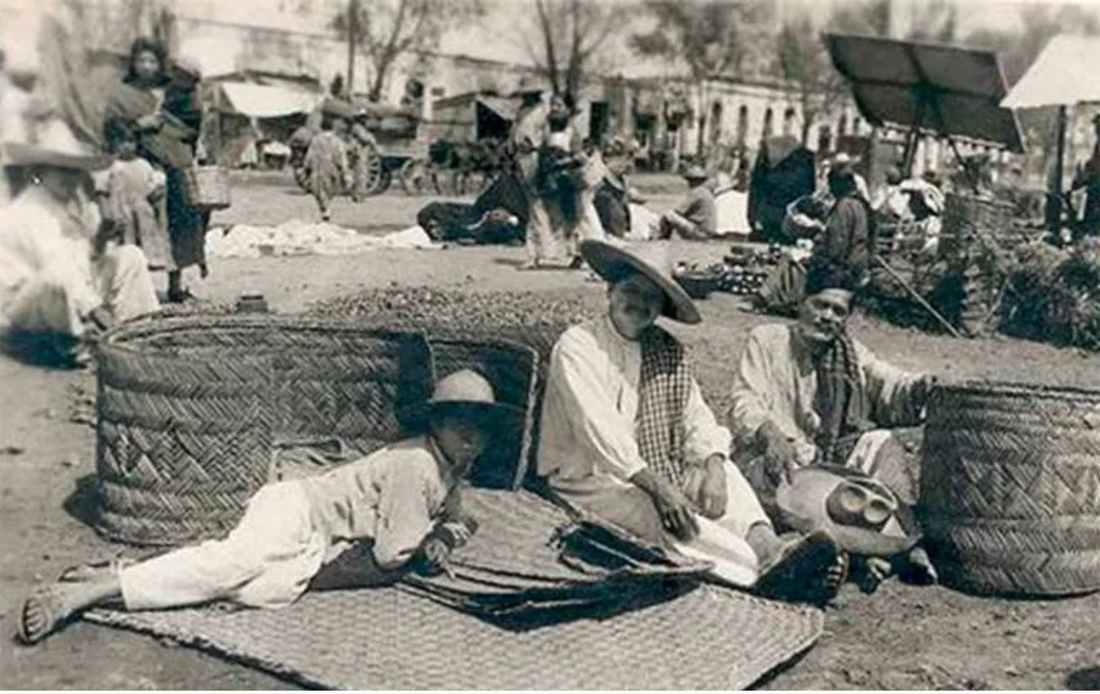
Petates
*
Nevertheless, Porter continued to publish essays about Mexico. In "Leaving the Petate" (1931), she lamented the disappearance of the petate, the traditional woven straw mat—"an object full of charm for the eye, and immensely useful around any house." She saw this state of affairs as emblematic of the demise of Indian culture in Mexico, where the next generation would turn out to be "good little conservative right-minded dull people."
Porter embraced Mexico affectionately and had great hopes for the country. Her Mexican essays—they are included in The Collected Essays and Occasional Writings of Katherine Anne Porter (1970)—reveal her to be an astute, intelligent, and passionate observer of Mexico, which was undergoing enormous change during the years she was here. Nevertheless, as George Hendrick, writes, "She did not accept all the changes naively." Indeed, in both her essays and her Mexican short stories (which I'll turn to in a future column), she fixed a sober eye on this country that she loved so deeply. At the same time, she maintained that in Mexico she had seen "always some chance of salvation." It's her keen eye and the lack of sentimentality of her vision that makes her writing on Mexico so worth reading.
**************

Philip Gambone, a retired high school English teacher, also taught creative and expository writing at Harvard for twenty-eight years. He is the author of five books, most recently As Far As I Can Tell: Finding My Father in World War II, which was named one of the Best Books of 2020 by the Boston Globe. It is available through Amazon, at the Biblioteca bookshop, and at Aurora Books off the Calzada de la Aurora.
**************
*****
Please contribute to Lokkal,
SMA's online collective:
 ***
***
Discover Lokkal:
Watch the two-minute video below.
Then, just below that, scroll down SMA's Community Wall.
Mission

Visit SMA's Social Network
Contact / Contactar

